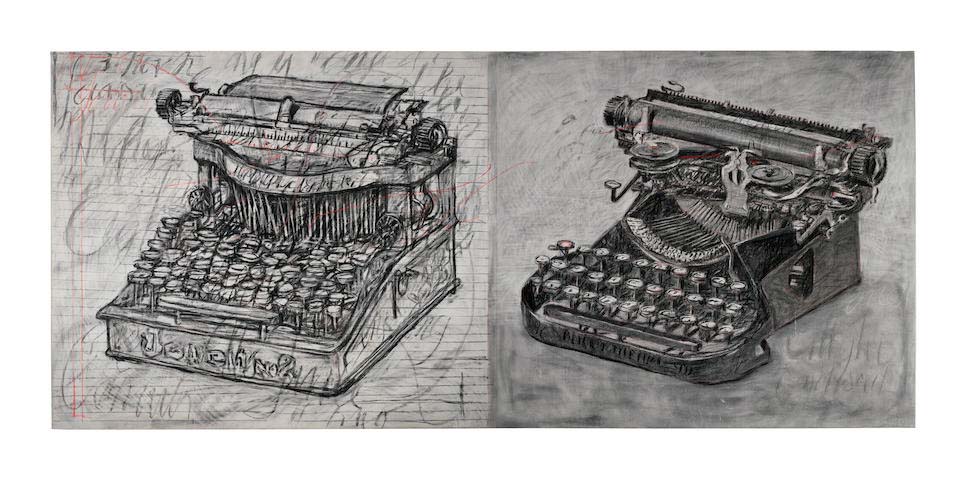I like South African artist William Kentridge's depictions of typewriters. I even got permission to reproduce his piece "Undo Unsay Unremember"in my book (p. 259). So I don't mean to run him down. Still, I can't help looking askance at an auction that's coming up in two weeks.
Bonhams estimates the value of Kentridge's Large Typewriters at £350,000 - £550,000.I like the piece, it shows Kentridge's love of typewriters, but ... really?
Bonhams describes the artwork as
a dual image combining both the banal and the absurd, the real and the imagined. ...
First of all, what's absurd about it? And what is imagined? The typewriters may look fantastic and bizarre to the layman, but those who know typewriter history know that we are looking at pretty realistic depictions of a real (though not banal) Jewett no. 2 and Blick 90.The double quasi-identical image – differentiated only by the level of detail – is discreet in its symbolism; on one hand speaking to wider themes in the artist's work, while on the other referencing its own physicality. The typewriter is an object that turns words into something tangible on paper, and so it is perhaps no small wonder that it's an object that has such a special significance to a multi-disciplinary artist like Kentridge, whose work is imbued with a real sense of history."




I can't justify any art (and many other things) for half a million dollars. The perspective is off on the Blick, but I don't know what the artist was trying to portray.
ReplyDeleteWhat I don't understand is the high dudgeon of disinterested people and their seeming condemnation of the artist for what other, unrelated people want to do with their money. It's an auction. Is it the artists' or even the auction houses', fault that strangers bid things up? Well, maybe the houses' fault a little because of their pushing of the gobbledygook. But it's the buyer who determines the price, not the seller. Richard, I love your analysis of this situation!
ReplyDeleteGood point. If people want to invest lots of money in art (and this is a matter of financial investment, much more than art appreciation), that's their right, and congratulations to the artist. There's a word for the feelings of people who get really mad about this: envy. I'm not mad about it myself, I just think it's kind of silly.
DeleteI suppose that the beauty of having half a million dollars to spend on drawings of typewriters (or anything else for that matter) is just that.
ReplyDeleteThis seems like this one is going straight to the Geneva Freeport. I’m sure that it will be traded around the Freeport and increase in value all the while providing wealthy art collectors a wonderful return on their investment. The secondary art market is a shambolic, corrupt mess.
ReplyDeleteAt least the buyer is getting a physical manifestation of the artist's work for a half mil, and not just a non -fungible token in a blockchain for $69mil!
ReplyDeleteI think that the blurb is just a marketing ad to sell the image. The price is driven by what collectors are willing to pay, and so has little, if any, reflection on the merit of the art.
ReplyDelete